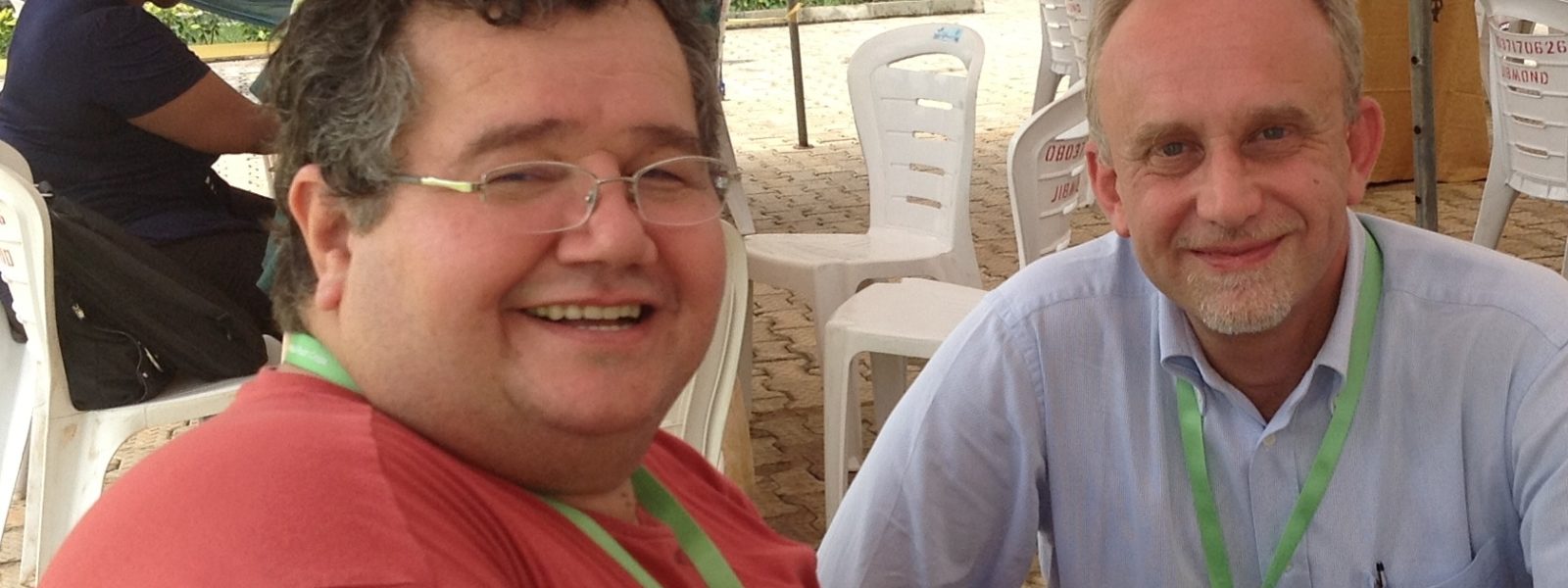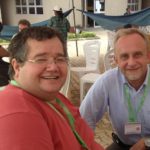Dr. Ortiz was interviewed during the 16th symposium of the ISTRC at the Federal University of Agriculture in Abeokuta, Nigeria on 25 September 2012.
After reading the engaging homage to Dr. Rodomiro Ortiz published by Jonathan H. Crouch in the Plant Breeding Reviews, one can only hope to cross paths with the talented and amiable agricultural scientist. That’s what happened on the campus of the Federal University of Agriculture, Abeokuta, Nigeria, at the occasion of the 16th symposium of the International Society for Tropical Root Crops (ISTRC). Here is his take on the RTB Research Program.
VDM: You have worked for CIP, CIMMYT, and IITA, and conducted research on potato and musa, among other crop species and subjects. What do you think are the opportunities and the challenges of the RTB research program?
Rodomiro Ortiz – I also worked as a program director at ICRISAT in addition to serving as a consultant to ICARDA and CIAT, where I facilitated the organizations’ meetings and reviewed their respective programs. I was also a scientific advisor to the CGIAR Consortium office until mid-2011. CGIAR is well known for its work on cereals, but I believe roots, tubers and bananas are also very important. Tell a Nigerian they’re not going to eat ‘gari’ (from cassava) anymore! The world’s population needs more than bread. So it’s great to see that CGIAR is recognizing RTB crops. It’s also a great opportunity for scientists to work together. RTB is a small community, so it should help with the collaborative work. The challenge? Add value to the raw commodity. Post-harvest issues are big ones: storage, processing… You need to add value to these crops, and looking at processing could be a way of extracting extra value. Nevertheless, they keep the advantage of being very amenable for meeting the needs of poor people and smallholder farmers too. We also need to increase productivity, and more targeted science for a better specification of the end-product.
How can the RTB research program make a difference to smallholder farmers?
RTBs can empower them. I think the driving concept of tackling food insecurity is limiting: smallholder farmers need to have enough to sell to get beyond self-sufficiency. RTB can help uplift them. We have to stay away from the ‘romantic’ view of agriculture that has been prevalent. Don’t forget that agriculture is also a business! Do you know any “public” farmers? Farmers, by the nature of their job, all run their own business, no matter how big or small is the land they farm. Smallholder farmers want to get out of poverty; it’s also a question of pride. Now, we need to find a balance, because we need farmers. But to avoid the migration of young people who don’t want to suffer like their parents did, we have to make farming more attractive. So there’s a need to empower them, and there’s a need to modernize farming and rural life too, as happened in developed countries. We want to help people, but this is still not happening. Let’s do something!
You know CGIAR inside out. You have managed and mentored several scientific teams. What would you say to the RTB team?
Lead by example! Start with disagreements if necessary – I believe in democracy in discussions. But then make clear decisions to show the path ahead. Stay away from the traditional approach and avoid comfort zones, offer something big to scientists to work on. Change habits! Set goals and contribute as a team. Now, what impact do we want? We are looking for big, ambitious jumps. So let’s set ambitious goals and try to sell them to donors.
What are the three main points the general public and the policymakers should be educated about?
There are more and more people on the planet, and they are getting wealthier. Tell policymakers that agriculture is needed! They should work on stabilizing prices, so the poor can afford food, increasing both quantity and quality. I believe success should be disseminated. Focus on health through nutrition quality. For instance: improve potatoes so they become rich in proteins and various micronutrients. We should find “mantras”, clear and compelling messages that people understand and that stay. They did an excellent work on the orange-fleshed sweetpotato (OFSP) with a simple slogan: OFSP is health. This is a great message! Define your mission and your statement clearly, make it short so people can understand and remember it.
You have an impressive record in research and teaching. Where do you picture yourself five years from now?
That’s a difficult one! I really enjoy the exchange with students, like right now with my position as Professor of Genetics and Plant Breeding at the Swedish University of Agricultural Sciences. Teaching is a wonderful experience. I also like research a lot, of course. As long as I have a mission and I am challenged, I’ll be fine! Now, something that worries me: we need to attract more students. Lately most youngsters lean towards biotechnology, but we also need plant breeders! So plant breeding programs should be made more attractive, and curriculums should be modified and marketed.
Do you have a soft spot for any particular RTB crop?
Why, did you have any doubt? Potatoes, for sure: baked, boiled, fried…I am Peruvian, remember!
Text and photo by Véronique Durroux-Malpartida

